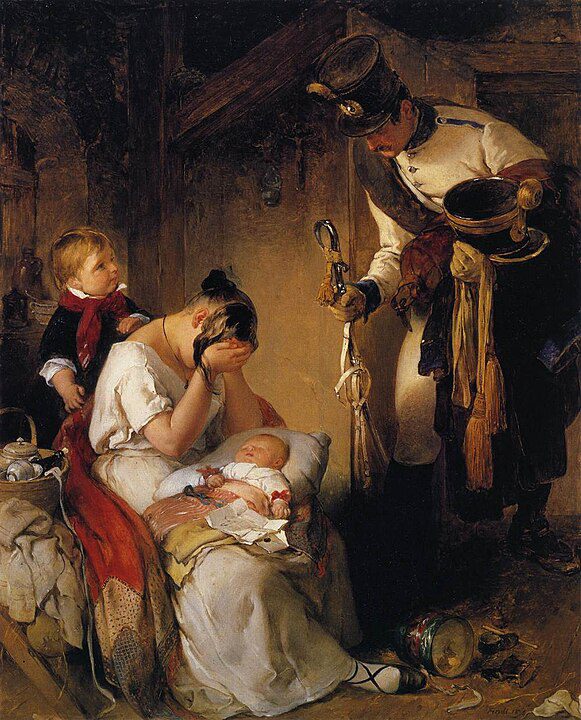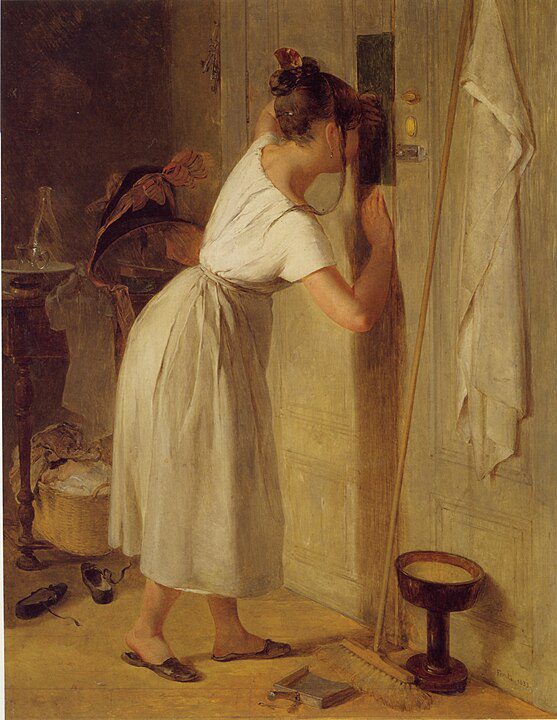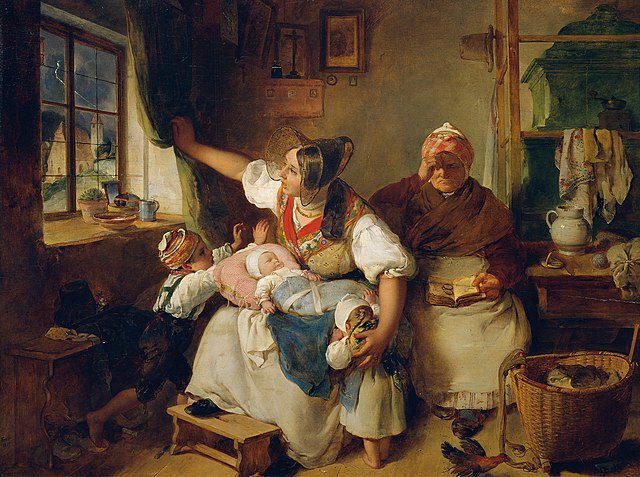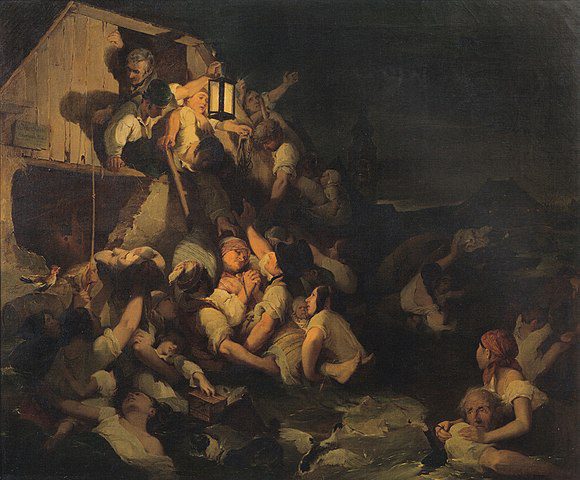
Peter Fendi, born on September 4, 1796, in Vienna, Austria, was an Austrian painter and engraver known for his contributions to genre painting and erotic art during the 19th century. Fendi’s career was marked by his skillful depictions of everyday life, as well as his controversial works that explored the realm of eroticism.
Fendi’s artistic journey began with his studies at the Academy of Fine Arts in Vienna. He initially focused on historical painting but later shifted his attention to genre scenes and portraiture. His early works gained attention for their technical proficiency and attention to detail.

In the 1820s, Fendi established himself as a prominent figure in the Viennese art scene. He became associated with the Biedermeier movement, a cultural and artistic trend in Central Europe characterized by a focus on domestic life and middle-class values. Fendi’s genre scenes captured the charm and simplicity of everyday existence, often portraying scenes of family life, social gatherings, and leisure activities.
Love of Lithography
One of Fendi’s notable achievements was his proficiency in the art of lithography. He excelled in this medium, producing finely detailed prints that showcased his technical skill and artistic vision. Fendi’s lithographs, ranging from portraits to scenes of daily life, gained popularity and contributed to the dissemination of his work.

While Fendi gained recognition for his genre scenes, he also became known for his exploration of erotic subject matter. In the mid-19th century, Fendi created a series of explicit and controversial erotic illustrations, known as the “Fendi Album.” These works, marked by a blend of humor and sensuality, were created for private collectors and were not intended for public exhibition. Despite the private nature of these works, Fendi faced criticism and legal challenges due to the explicit content.
Versatile Artist
Throughout his career, Fendi’s art evolved in response to the changing tastes of the time. His later works included historical paintings and portraits, showcasing his versatility as an artist. Despite the controversies surrounding his erotic art, Fendi continued to be a respected figure in the Viennese art world.
Peter Fendi’s legacy is multifaceted, reflecting both his contributions to Biedermeier genre painting and the controversies surrounding his exploration of erotic themes. His ability to navigate different genres and mediums demonstrated his adaptability and skill as an artist.

Peter Fendi passed away on August 28, 1842, in Vienna, leaving behind a body of work that continues to be studied and appreciated for its diverse range and historical significance. While his erotic illustrations remain a notable aspect of his career, Fendi’s broader impact on Austrian genre painting and lithography is also acknowledged in the annals of art history.




